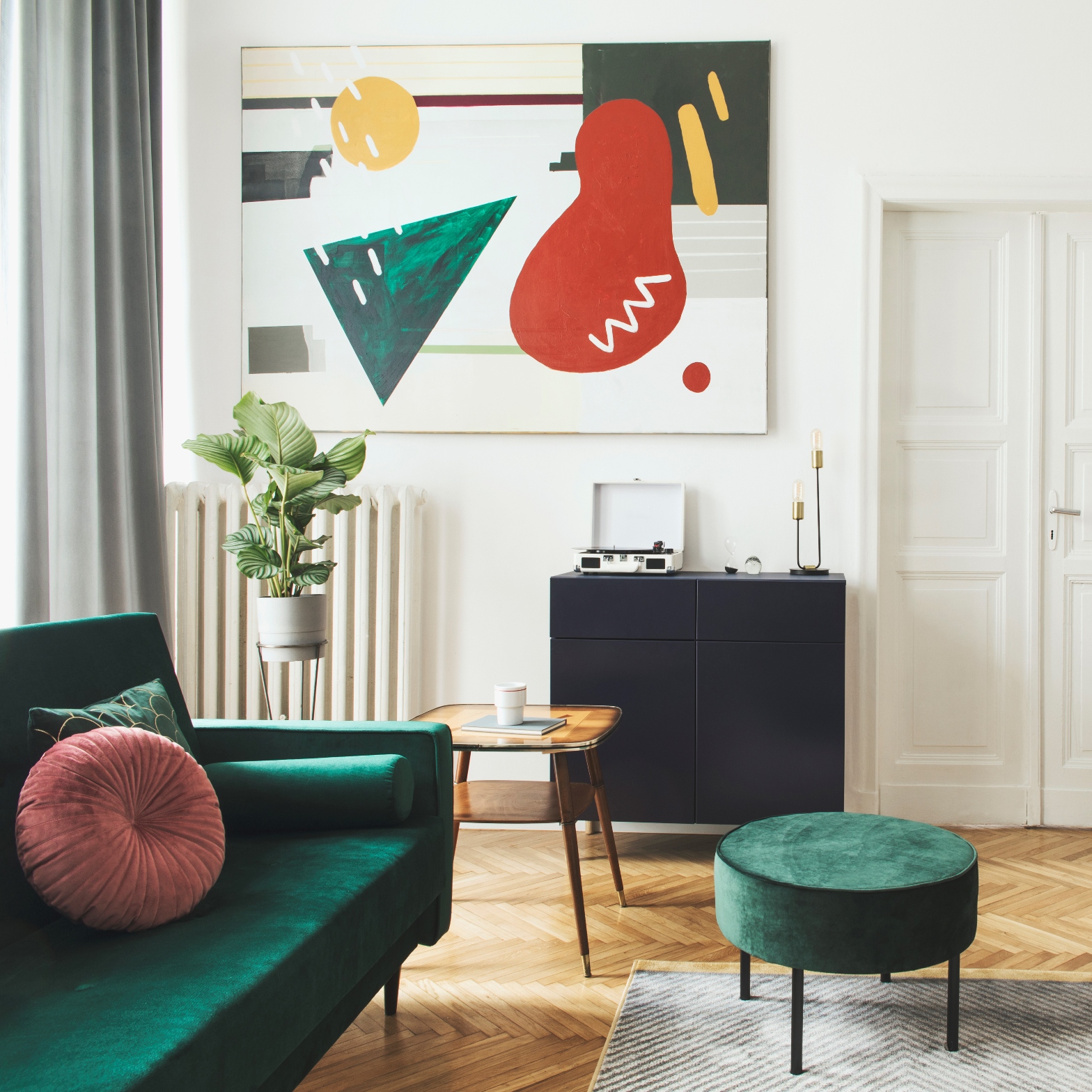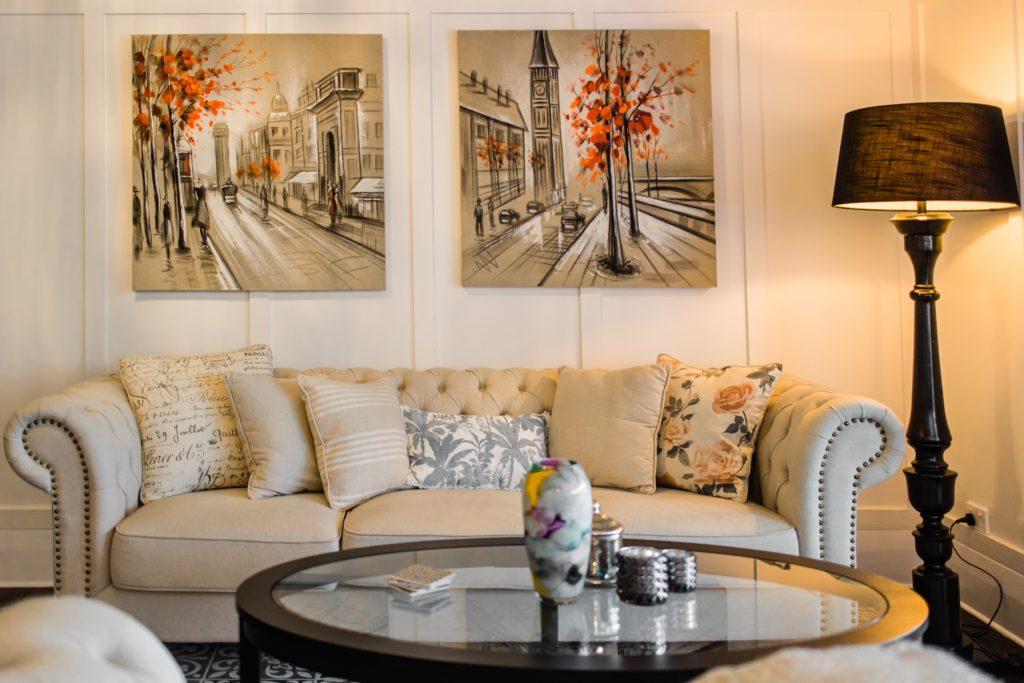Hanging artwork serves more than just covering blank surfaces. It brings extra significance, texture, and mood, revealing what daily life looks like in your home.
Art with emotion doesn’t just decorate. It shapes how a room feels and shifts what people remember about the space.
Why Emotional Connection in Art Matters
Art brings life to empty rooms. Without it, spaces feel dull and disorganized, and emotional connections lessen. Art moves people into moments, much like music carries listeners away. A quiet portrait can soothe a hallway, while bright colors may enliven a living space.
Science supports this: studies indicate that engaging with art releases dopamine and even lowers stress levels. Spaces that include art rooted in feeling help occupants connect inward and outward.
Research shows art provides real advantages. Choose home objects that matter to you personally to help you feel happier, healthier, and get more done. Including carefully chosen artwork helps create a setting that supports good moods and improves performance.
Creative Wall Art Ideas to Evoke Emotion
Try these art suggestions to influence your home’s vibe. Each idea targets a certain mood or feeling, helping your spaces feel more unique and energetic.
1. Expressionism Wall Art
Expressionism wall art pushes color, form, and energy to the edge. Expressionist artists do not aim to depict objects exactly as they appear. Artists express personal perspectives. This personal expression fundamentally transforms audience worldviews.
This art movement started in Europe and developed during the early 1900s, with Edvard Munch and Wassily Kandinsky providing the essential creative foundations that shaped the movement’s core direction.
Bold brushwork defines Expressionism. Artists employ distinctive forms and forceful brush techniques to communicate intense emotional content through visual elements.
When you display Expressionist art in a room, it can transform a quiet space into an area rich with vitality and personal significance.
2. Portraiture with a Story
Traditional portraits focus on accuracy. Creative portraiture, however, goes further. Look for pieces where mood, background, gesture, and unusual angle add to the story. Portraits with expressive features, hints of narrative, or mixed media spark curiosity and emotional engagement. Think less “family photo,” more “window into another world.”
3. Mixed Media Collage Art
Collages combine various textures, photographs, paper fragments, and color schemes, often creating surprising visual effects. Works that use mixed media gain depth and a tangible quality from their built-up layers, and these unanticipated mixtures can stir emotional responses.
Artists regularly use old or discovered objects to craft these works, showing resourcefulness. The artwork shows movement, capturing the busy, multi-layered reality of daily life.
Mixed media invites constant exploration. Every viewing reveals new details, transforming each experience into something dynamic and moving rather than predictable and unchanging.
4. Nature-Inspired Emotional Landscapes
Landscape art traditionally roots us to place, but emotional landscapes go further. They use weather, light, and abstracted forms to suggest mood. A stormy coastline, a glow at sunset, or even surreal arrangements of trees can tap directly into feelings of calm, longing, or awe.
5. Quote-Based Typography with Artistic Flair
Words matter, especially when layered with art. Modern typographic art—quotes rendered in paint, neon, or collage—can lift the mood or anchor a space with intent.
Choose phrases that hold meaning and pair them with engaging design. Typography art blends clear sentiment with visual impact.
How to Choose the Right Wall Art for Your Emotional Goals
Move through the space and observe how it feels. Think about its primary use: relaxation, focus, gathering? Match the emotional tone to the room’s function.
- Calming art works for bedrooms and meditation corners—think gentle landscapes, cool palettes. These visuals are proven to lower stress and help the mind settle, making restful spaces more peaceful.
- Bold, energetic work suits areas where activity and conversation happen. Vibrant art increases energy and social interaction, making living rooms and dining areas feel livelier.
- Personal portraits or narrative works fit best in places of gathering. Familiar faces or meaningful scenes encourage connection and spark conversation in shared spaces.
- Review pieces for color, shape, and energy. Ask what emotion the work honestly stirs. If it doesn’t move, skip it. Art that triggers no feeling won’t add to a room’s mood or sense of identity.
Placement and Framing Tips That Enhance Emotional Impact
Placement and framing affect not just how art looks, but also how it shapes the mood of a room. Thoughtful choices help the artwork grab attention and boost its emotional effect.
- Place dominant art at eye level, especially in entryways and above furniture.
- Let larger works stand alone. Gallery walls work with medium or mixed pieces.
- Framing matters: minimal for modern, raw edges for expressionism, and ornate for classical themes.
- For emotional focus, spotlight studio lights or angled lamps can magnify mood and drama.
Bringing Out the Heart in Your Home
Emotion-rich wall art is direct, transformative, and accessible. Select pieces that force a re-examination of space and self. Proper art selection and placement push a space beyond trend and into lasting impression.

